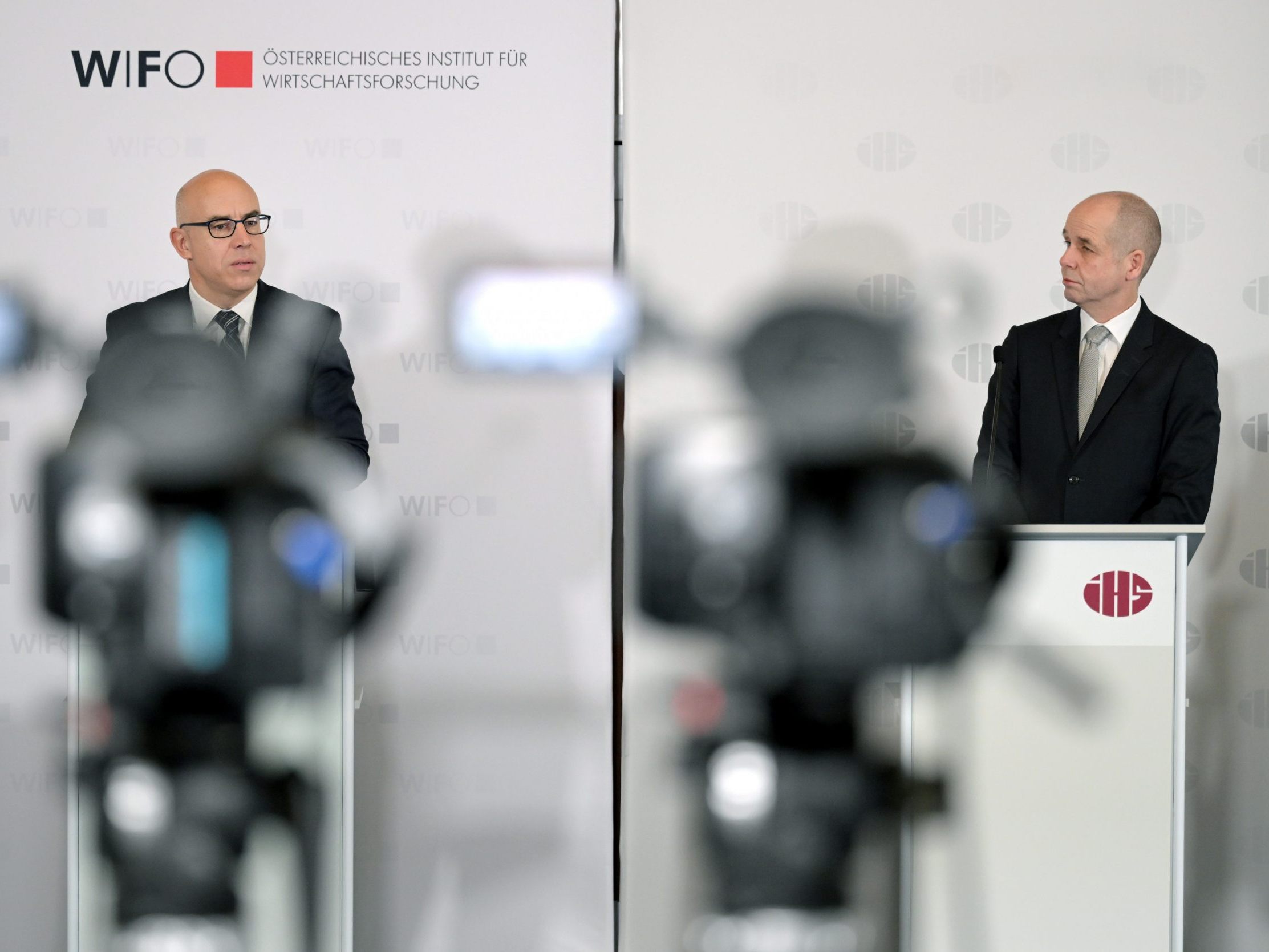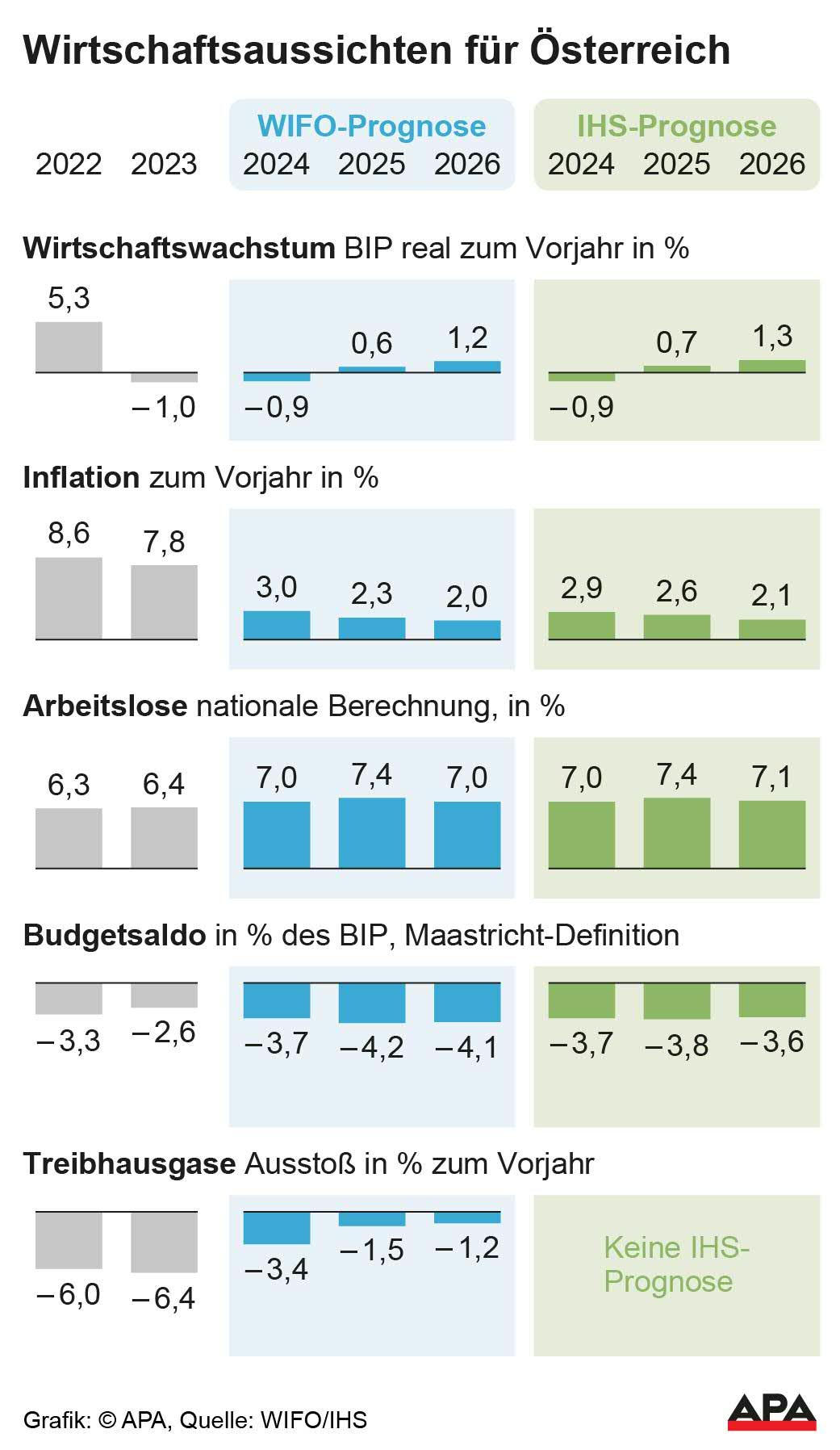Wifo/IHS Forecast: Austria's Economy Will Not Recover by 2025

The budget consolidation of the future government and structural problems are slowing down the expected economic recovery. After two years of recession, Austria's economy is expected to grow by 0.6 or 0.7 percent in real terms in 2025, according to the current Wifo/IHS economic forecast. The autumn forecast still assumed +1.0 or +0.8 percent. The budget deficit is expected to rise to 4.2 or 3.7 percent of gross domestic product (GDP) next year.
Less Economic Growth in 2025, Higher Budget Deficit
The institutes have prepared their winter economic forecast for 2024-2026 without taking into account a budget consolidation, as the extent and timing of spending cuts and possible tax increases are still being hotly debated in coalition negotiations between ÖVP, SPÖ and NEOS.
"The wait for a recovery continues," said Wifo Director Gabriel Felbermayr on Friday at the presentation of the economic forecast. Felbermayr warned against public sector austerity measures with a lawnmower. "A sudden reduction" of the deficit to the Maastricht limit would dampen GDP growth - depending on the type and timing of the measures - by 0.5 to 1 percentage point, according to the Wifo chief. Instead of moderate growth, "a new recession would threaten in this case".

According to Felbermayr, there are many question marks in the current economic forecast, such as the extent of budget consolidation, the tariff policy of future US President Donald Trump, and the further effects of the Ukraine war and the Middle East conflict. "Looking into the future is very difficult."
IHS chief Holger pointed out that Austria's medium-term potential growth is low compared to other EU countries. "The elephant in the room is the low potential growth. It's scratching at the 1 percent mark," Bonin told the Wifo/IHS press conference. The future government must find answers to the structural problems of the domestic economy. For 2026, Wifo and IHS expect a GDP increase of 1.2 or 1.3 percent without government austerity measures.
No Signals for Economic Recovery
Austria's economy has been shrinking for the second year in a row. The recession in industry and construction has continued. Private consumption, exports and companies' gross fixed capital formation have been declining for two years. In 2023, real economic output in Austria fell by 1 percent, and in 2024 the decline is expected to be 0.9 percent. In October, Wifo and IHS still forecast a slightly smaller GDP minus of 0.6 percent for the current year. "The domestic economy has structural problems, and so far there are no signals for a strong recovery," write the economists of the Institute for Advanced Studies (IHS).
Inflation Expected to be Lower in 2025
After the record inflation years of 2022 and 2023 with 8.6 percent and 7.8 percent, inflation in Austria is expected to be significantly lower this year at 3.0 or 2.9 percent. However, a significant increase in energy prices is expected at the beginning of 2025, because the electricity price brake expires, the energy levies for electricity and natural gas are returned to their normal level, and the green electricity subsidies come back into force. In addition, network charges and the CO2 price are rising. Therefore, Wifo expects an increase in inflation to 2.5 percent at the beginning of the year.
Unemployment Numbers Set to Rise Again
For the full year 2025, Wifo and IHS predict an increase in consumer prices of 2.3 and 2.6 percent respectively. For 2026, the economic researchers expect an inflation rate of 2.0 and 2.1 percent respectively.
Two years of recession are also noticeable in the unemployment figures. Wifo and IHS predict an equal increase. The unemployment rate is expected to rise from 6.4 percent in 2023 to 7.0 percent this year and 7.4 percent next year.
Budget Deficit to Rise to 4.2 Percent Next Year
The forecast by Wifo and IHS also includes a government budget deficit of 4.2 and 3.8 percent of economic output next year. Possible austerity measures by the future government were not taken into account in the forecast. This year, the deficit is expected to be 3.7 percent of GDP. Austria is thus significantly above the EU debt rules (Maastricht criteria) of 3 percent.
A reduction of the budget deficit from 4.2 to 3 percent of gross domestic product (GDP) would correspond to a consolidation requirement of "about 6 billion euros" according to Wifo. However, a far-reaching budget consolidation of the public sector would significantly slow down economic growth in Austria. "A sudden reduction" of the deficit to the Maastricht upper limit would dampen GDP growth - depending on the type and timing of the measures - by 0.5 to 1 percentage point, the Wifo economists explained.
Higher Social and Pension Expenditures Increase Deficit
The increase in the deficit next year results "from the lagging indexation of monetary social benefits, a strong increase in the number of pension recipients and rising expenditures of the states and municipalities in the areas of environment, housing, education as well as health and care within the framework of the Future Fund," writes Wifo in its quarterly economic forecast.
Without savings, the government budget deficit in 2026 is expected to be 4.1 percent or 3.6 percent according to Wifo/IHS calculations. The state's debt level would climb to 84.5 percent of GDP by 2026 without budget consolidation.
(APA/Red)
This article has been automatically translated, read the original article here.





